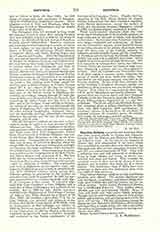

Zamora, Diocese of (ZAMORENSIS), in the Republic of Mexico, comprises almost one half of the State of Michoacan and has a population of 400,000. The city of Zamora, founded in 1540 by Antonio de Mendoza, and built with fortifications (a privilege at that time) to serve as a barrier against the onslaughts of the Chichimecas Indians, has a population of 14,000. Vasco de Quiroga, first Bishop of Michoacan (d. at Uruapan, March 14, 1565), made it a parish and placed a rector in charge. It was there, in fact, that the Franciscan Fathers had baptized the Indians many years before. When Michoacan became an archbishopric Zamora was made an episcopal see with the mountainous part of the State of Michoacan under its jurisdiction. The diocese has: 2 seminaries and 288 students, 159 parochial schools, and 12 Catholic colleges, with about 11,000 pupils. Protestants have neither churches nor colleges in this diocese. A new cathedral is being built in the city of Zamora, the birthplace of Msgr. Labastida y Davalos, Archbishop of Mexico, who took such an active part in the affairs of Mexico during the wars of reform and under the empire. Uruapan, founded by Father Juan de S. Miguel (one of the first Franciscans in Mexico), belongs to the Diocese of Zamora.
CAMILLUS CRIVELLI

